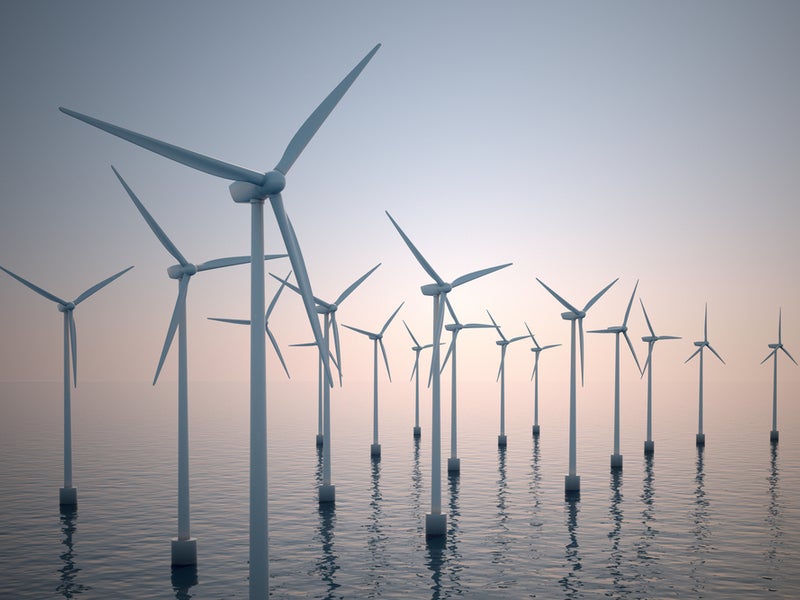Renewable projects are now starting to compete with conventional power, proving they can replace conventional power in many countries.
Listed below are the key technology trends in renewable energy, as identified by GlobalData.
Repowering of old wind farms
Wind repowering is defined as replacing older wind turbines with new wind turbines before the end of the old turbines’ lifetime. The new turbines are much more efficient and more powerful; they use the wind in an optimal manner and can provide high yields with better capacity factors.
Consolidation in the wind turbine manufacture market
Since 2017, there has been a lot of consolidation in the wind power industry, especially among the original equipment manufacturers (OEMs). A significant example of this was the merger of Siemens and Gamesa to form a single company – Siemens Gamesa.
European manufacturers have been expanding into markets that have traditionally been dominated by local players. Where necessary they have been forming joint ventures with the local players either for compliance or for synergy in that particular market.
Larger wind turbines are being developed and preferred
Higher wind turbine towers and longer blades increase capacity and electricity generated per turbine. Costs also decrease on a per megawatt (MW) basis. With increasing technological competence, larger turbines are being manufactured and more developers are opting to install these lager turbines. Offshore wind has been particularly growing. GE has recently built the world’s longest wind turbine blade – Halidade-X 12MW offshore turbine – featuring a 107m blade and 220m rotor.
Longer wind turbine rotor blades
The longer a rotor blade is, the more wind a turbine can harness and convert to electricity. The production of longer blades involves advanced structural designs and the use of complex composite materials.

US Tariffs are shifting - will you react or anticipate?
Don’t let policy changes catch you off guard. Stay proactive with real-time data and expert analysis.
By GlobalDataAdvanced wind farm O&M practices and techniques
New technological advancements are being seen in the operation and maintenance (O&M) activities of wind farms. Drones with HD cameras and thermal cameras are now solving a number of issues that wind equipment managers faced for years. Drones provide high-definition images and video footage of each wind turbine from the air to inspect damages and thermal imaging to detect any internal abnormalities.
Predictive maintenance comes into play
Predictive maintenance processes have become a common practice in the wind O&M market in the recent years. Predictive maintenance programmes aid the O&M service providers to arrange for ordering parts and schedule work and refurbishment activities, based on condition assessment. It also reduces the need for a technical crew member to make frequent plant visits. The process includes predictive models for visual inspection, confirmation of damage, coming up with an action plan, and assessing how long equipment can operate.
Growing scale and technology of offshore installations
Offshore wind power is going through a phase of transformative improvement. To tap higher wind speeds, developers are installing much larger turbines farther into the sea in deeper waters. Turbines that can handle faster winds, is unrestrained by the depth of water, and involves a support structure that can accommodate the increasing wind turbine size is the holy grail being sought after.
Battery storage
The rising share of renewable energy sources has necessitated the need for adoption of battery energy storage systems (BESS) technology. Intermittent renewable energy sources such as wind and solar power with significant peaks and troughs require energy storage for smooth output and to reduce ramp rates for medium and large power plants.
Hydrogen can facilitate increased contribution by renewables
Hydrogen serves as one of the leading alternatives for energy storage from renewables and seems to be favoured as a lowest-cost alternative for storing huge quantities of electricity over days, weeks and also months. The storage of hydrogen fuel can take place for long periods, and in quantities limited only by the size of storage facilities.
Mono PERC modules gaining popularity
Passive Emitter Rear Contact (PERC) solar cells were invented in the 1980s but they have only recently been produced in large scale for commercial use. It was only in 2019 that these modules gained popularity as mainstream solar modules. PERC modules are an upgrade from regular mono-crystalline modules in terms of efficiency.
Regulation will push rooftop solar power
Several city and province level governments have been pushing regulations that mandate a certain amount of roof space and other parts of a building to be used for solar power installations.
Floating solar installations
Floating solar photovoltaic (PV) installation has seen commercial scale adoption in 2016 and growth during 2016–2019, with over 2GW currently installed. Floating solar is about 25% more expensive to install compared to ground-mounted solar.
New solar PV applications
A number of solar PV applications are now coming into play such as solar roadways, space-based solar power and hybrid power plants. Solar roadways are modular systems involving specially engineered solar panels on which one can walk and drive. Space-based solar power is where satellites in Earth’s orbit capture the radiation of the sun, and then convert it into electricity. In hybrid power plants, solar PV is effectively combined with other technology to gain cost-effectiveness and higher power generation.
Use of data and technology
Modern technologies such as artificial intelligence (AI) and machine learning (ML), and blockchain are being adopted by the power industry especially by utilities and power system companies. AI and ML have an important role to play in improving demand predictions, generation predictions from non-dispatchable resources like wind and solar and wholesale price predictions. Blockchain is being used by utilities to create and maintain peer-to-peer electricity trading platforms.
This is an edited extract from the Renewable Energy – Thematic Research report produced by GlobalData Thematic Research.





